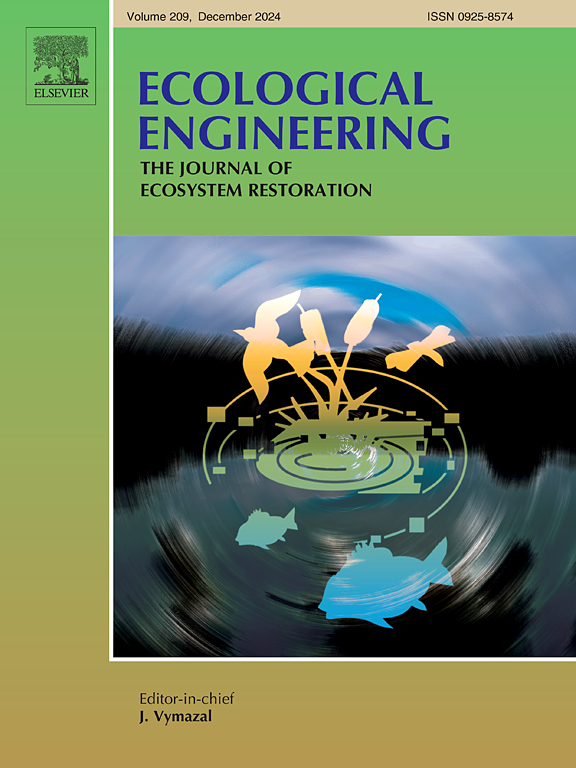Rehabilitation of intertidal biodiversity on breakwaters could be compromised by grazing pressure and environmental context
IF 3.9
2区 环境科学与生态学
Q1 ECOLOGY
引用次数: 0
Abstract
Sustaining biodiversity on coastal built structures is a priority to maintain ecosystem functioning in the face of increasing urban sprawl. This goal has been generally pursued by adding physical features to built structures to generate multiple microhabitats, without considering key species interactions, such as grazing. Here, combining descriptive studies across a latitudinal gradient along the coast of Chile (18°S to 41°S) and a field experiment, we examined if topographic enhancement of breakwaters increases grazer abundances. Specifically, we explored whether grazer densities and trait diversity influence the effectiveness of topographic microhabitats (crevices, grooves, and pits) in enhancing biodiversity on wave-exposed and wave-sheltered breakwaters. High abundances of grazers and a positive relationship between scraping-grazer densities and bare rock area were recorded on mid-latitude breakwaters. In most cases, topographic microhabitats did not enhance Shannon’s diversity index or species number of the sessile community on both wave-exposed and wave-protected breakwaters. Only at high shore levels of a wave-exposed breakwater adding crevices resulted in increased diversity, species number and cover of filter feeders and calcareous algae. These changes also corresponded with lower grazer densities and bare space cover. Our results suggest that the effectiveness of eco-engineering solutions in sustaining intertidal biodiversity on coastal structures can be significantly reduced by grazing and influenced by wave-exposure, and tidal level. Innovative designs to rehabilitate biodiversity should attract native predators to control the abundances of grazers and their impacts. Promoting balanced consumer-resource interactions would enhance the ecological value of built structures and could aid in halting anthropogenically-driven coastal biodiversity loss.
求助全文
约1分钟内获得全文
求助全文
来源期刊

Ecological Engineering
环境科学-工程:环境
CiteScore
8.00
自引率
5.30%
发文量
293
审稿时长
57 days
期刊介绍:
Ecological engineering has been defined as the design of ecosystems for the mutual benefit of humans and nature. The journal is meant for ecologists who, because of their research interests or occupation, are involved in designing, monitoring, or restoring ecosystems, and can serve as a bridge between ecologists and engineers.
Specific topics covered in the journal include: habitat reconstruction; ecotechnology; synthetic ecology; bioengineering; restoration ecology; ecology conservation; ecosystem rehabilitation; stream and river restoration; reclamation ecology; non-renewable resource conservation. Descriptions of specific applications of ecological engineering are acceptable only when situated within context of adding novelty to current research and emphasizing ecosystem restoration. We do not accept purely descriptive reports on ecosystem structures (such as vegetation surveys), purely physical assessment of materials that can be used for ecological restoration, small-model studies carried out in the laboratory or greenhouse with artificial (waste)water or crop studies, or case studies on conventional wastewater treatment and eutrophication that do not offer an ecosystem restoration approach within the paper.
 求助内容:
求助内容: 应助结果提醒方式:
应助结果提醒方式:


